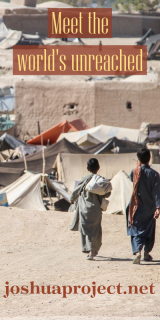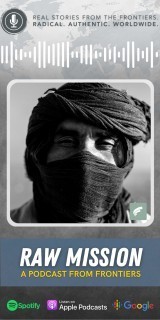Is This China’s Final Solution for the Uyghurs?

Gulbahar Haitiwaji (not her real name) was a Uyghur exile in France who returned to China to sign important papers. Chinese government officials had a photo of her daughter attending a Uyghur cultural event in France where the Uyghur flag was displayed. For this reason, Mrs. Haitiwaji was regarded as a terrorist and sent to a re-education camp for two years. Such reports keep pouring in from credible publications like BBC News and The Diplomat.
The first contact between the Han Chinese and the nomadic ancestors of the Uyghurs in 130CE was positive. These ancestors were ethnic Tocharians, Buddhists who founded the Kushan Empire. City-states thrived along what we now call the Silk Road. Trade lasted for hundreds of years bringing prosperity to many. The Kingdom of Khotan, surrounded by the Kushan Empire, was especially prosperous during the time it was a protectorate of China’s powerful Tang Dynasty, which defended it from nomadic marauders.
Trade eventually shifted to the oceans rather than land-based caravans. China’s Tang Dynasty fell, and the new Song Dynasty was powerless to protect this region, which was soon ravaged by Tibetan and Turkic marauders, the Uyghurs being among the latter.
In the 900s and 1000s, there was mass conversion of Central Asian Turks to Islam, including the Uyghurs. Eventually the Uyghurs assimilated the peoples who lived in this region, which came under control of the Mongol Empire in the 14th century. It took another four centuries for the Chinese to regroup under the Qing Dynasty and conquer this area. By that time the region had fallen into poverty.
The Qing Dynasty, 1644–1911, began to refer to this region as xin jiang, meaning the “new frontier.” That name demonstrated a key difference in how the Chinese viewed this Turkic region, and today one of the five stars on the Chinese flag represents the Uyghurs. The Chinese ruled through the Turkic-speaking Muslim elite, and from the start there were rebellions. One revolt resulted in an independent government which lasted from 1867–1878. This region, called both xin jiang and Eastern Turkestan, was devoured by the Qing Dynasty and named Xinjiang in 1884.
The Qing Dynasty controlled Xinjiang until this dynasty collapsed in 1911. During the next three decades, there were attempts to create two independent Muslim states. With the rise of Mao Zedong’s Chinese Communist Party (CCP) in 1949, these states were taken by China.
In 1955, the People’s Republic of China created the Xinjiang Uighur “Autonomous” Region as a concession to the Turkic Muslim majority that lived there. The centralized authority of the PRC was weakened during the chaotic time of the 1966- 76 Cultural Revolution, and the Uyghurs demanded independence. Part of this was because there had been a steady stream of Han Chinese settling in their homeland. This process of making Xinjiang more Chinese accelerated in the decades to come. By 2000, 40 percent of the Xinjiang population was Han Chinese—not even including Chinese troops.
As the nearby USSR dissolved in the early 1990s, Turkic “Soviet Socialist Republic” became independent, and Uyghurs under China’s control were hoping for their own independence. Fearing a spread of such independence movements, the Chinese government doubled down by suppressing demonstrations. The Uyghur separatists went underground.
China began major development projects in Xinjiang, which brought economic prosperity to urban centers. The good jobs went to Han Chinese, while Uyghurs watched from the sidelines, growing increasingly resentful.
The Uyghurs lashed back. In 2009 there were large-scale ethnic riots in the capital city of Urumqi, and 200 perished in the bloodshed, most of them Han Chinese. From then on, the Chinese government has blamed the entire Uyghur population, regarding them as Muslim terrorists. Throughout the 2010s Uyghur terrorists conducted a blur of hijackings, riots and attacks on police stations.
Starting in the 2010s, the Chinese government became increasingly cruel in their treatment of the Uyghurs. With a population of about 12 million, about one million Uyghur men and some women have been sent to detention camps, which the Chinese government has given the euphemism “re-education camps.” Instead of the vocational training that the Chinese government tells the public they are offering, Uyghurs are subjected to endless indoctrination sessions. While they are away, their wives and children face even grimmer consequences since the Chinese want to drastically change Uyghur families to become loyal to the government. Uyghur children are sometimes “adopted” by Han Chinese families. Under the guise of what the Chinese government calls the “Pair up and become a family” program, Han Chinese monitors stay with Uyghur families every two months, work and eat with them, and even sleep in the same beds as the wives.
Women who are sent to internment camps face even greater cruelty and humiliation. A February 2, 2021 article in BBC News reports gang-rapes of interned Uyghur women. The Chinese government responded by banning BBC News from their country after this story was published. Governments have spoken out against the cruel government actions, but Beijing is far from repentant. Uyghurs who remain in China are vulnerable to incarceration if their relatives outside the country speak out.
What is China trying to accomplish? Is the end goal to terrorize the Uyghurs into submission, or is it actually genocide? There has been a forced sterilization among the Uyghurs program since 2016. They have also used forced birth control and mandatory abortions to lower the number of newborn Uyghurs. These efforts have been very successful according to a graph published by the Associated Press in June 2020.
Historically speaking, totalitarian governments do not respond to outside pressure, and China is no exception. Yet there can be pressure brought on them from above. God is much more powerful than any government, and we need to turn to Him.
- Pray for the Lord to intervene and bring truth, justice and mercy to the situation.
- Pray for Him to provide spiritual and emotional healing to the traumatized and for Uyghurs who have escaped and are experiencing “survivors’ guilt.”
- Pray for the Chinese Church to be salt and light in this increasingly dark situation.
Sources:
(https://thediplomat.com/2015/07/troubled-today-chinas-xinjiang-has-a-long-history/)
(https://www.historytoday.com/archive/behind-times/uighurs%E2%80%99-history-china) (https://www.bbc.com/news/world-asia-china-26414014)
(https://www.independent.co.uk/news/world/asia/muslim-china-uighur-forced-share-beds-male-officials-detention- camps-a9185861.html)
(https://www.cato.org/blog/uyghur-genocide-shows-urgency-combatting-neo-malthusianism)








comments